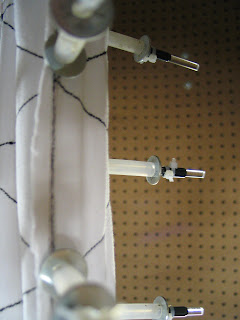
The Museum of Contemporary Art (MOCA) is a contemporary art museum in and near Los Angeles, California. The museum has three locations. the main branch is located on Grand Avenue in Downtown Los Angeles near Walt Disney Concert Hall. MOCA's original space, initially planned only as a "temporary" exhibit space while the main facility was built, was retained and is now known as the Geffen Contemporary, in the Little Tokyo district of downtown Los Angeles. The Pacific Design Center facility is in nearby West Hollywood.
The museum's exhibits consist primarily of American and European contemporary art created since 1940.
In 1979, at a political fund raising event at the Beverly Hills Hotel, Los Angeles Mayor Tom Bradley, Councilman Joel Wachs, and local philanthropist Marcia Simon Weisman happened to be sitting at the same table. Throughout the evening, Weisman passionately discussed the city’s need for a contemporary art museum. In the following weeks the Mayor’s Museum Advisory Committee was organized. The committee led by William A. Norris set about creating a museum from scratch including locating funding, trustees, directors, curators, a gallery, and most importantly an art collection.
The following year the fledgling Museum of Contemporary Art, Los Angeles, was operating out of an office on Boyd Street. The city’s most prominent philanthropists and collectors had been assembled into a Board of Trustees and set a goal of raising $10 million in their first year. A working staff was brought together; Richard Koshalek was appointed chief curator; relationships were made with artists and galleries; and negotiations began to secure artwork and an exhibition space.
Since the museum’s inception, MOCA’s programming has been defined by a multi-disciplinary approach to contemporary art. With cutting-edge exhibitions, and popular evening events MOCA is a place to experience contemporary art.
MOCA Grand Avenue
The MOCA downtown Los Angeles location is home to almost 5,000 artworks created since 1940, including masterpieces by classic contemporary artists, and inspiring new works by emerging and mid-career artists from Southern California and around the world.
In 1986, the celebrated Japanese architect Arata Isozaki completed the downtown location's sandstone building to international critical and public acclaim, marking a dramatic achievement in the contemporary art world and heralding a new cultural era in Los Angeles.
As the Los Angeles Times declared "There isn’t a city in America—not New York, not Chicago, not Houston, not San Francisco—where a more impressive museum collection of contemporary art can be seen."
The Grand Avenue location is used to display pieces from MOCA's substantial permanent collection, especially artists who did much of their work between 1940 and 1980. Included within the permanent collection are works by influential artists such as Jean-Michel Basquiat, Willem de Kooning, Richard Diebenkorn, Kim Dingle, Sam Durant,Sam Francis, Arshile Gorky, David Hockney, Jasper Johns, Ellsworth Kelly, Franz Kline, Roy Lichtenstein, Agnes Martin, Piet Mondrian, Robert Motherwell, Elizabeth Murray, Claes Oldenburg, Raymond Pettibon, Jackson Pollock, Robert Rauschenberg, Mark Rothko, Julian Schnabel, George Segal, Joel Shapiro, Frank Stella, and Cy Twombly
http://en.wikipedia.org/wiki/Los_Angeles_Museum_of_Contemporary_Art







































